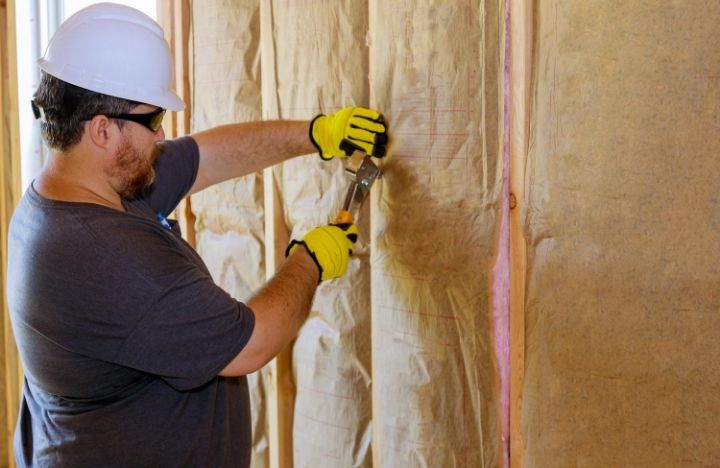Is Insulation Flammable?

The answer to that question is: It depends. It depends on the insulation material that is being installed and how it has been treated. Some insulating materials help spread a fire, others produce toxic gases and smoke, some are fire resistant. It’s important to use the right type of insulation for the conditions and to take safety precautions when appropriate.
What Is Insulation?
Insulation is any material used to fill the spaces of your home — behind walls, above ceilings, small gaps — to reduce heat flow between areas that are significantly different in temperature, for example exterior and interior spaces. Insulation increases a home’s comfort level and energy efficiency.
Flammable Insulation Materials
Cellulose
The most flammable insulation material is cellulose. This commonly used environmentally-friendly insulation is made of up to 80 percent recycled paper fiber. Even when heavily treated with fire retardant, this paper material is highly combustible and should be kept at a distance from heat sources like recessed lighting cans and chimneys.
Foam Insulation
All foam plastic materials are flammable, whether sprayed or in board form, and can create smoky, toxic fires that are difficult to extinguish. Polyurethane foam can even spontaneously ignite due to heat buildup during the curing stage.
Fire Resistant Insulation Materials
Mineral Wool
This old-school material, also known as rock wool or slag wool, is the most fire resistant insulation. Its noncombustible fibers can withstand heat of over 1,800 degrees F. Mineral wool is expensive, however, so its use is generally limited to areas around heat sources.
Fiberglass
Popular, affordable fiberglass is naturally noncombustible because it is made from sand and recycled glass. Some vapor-retardant facings used with fiberglass are combustible but do not pose a fire hazard when properly installed.
Employer Responsibilities and Insulation Risk Considerations
Construction workers are exposed to a variety of health hazards every day, and OSHA holds employers responsible for having plans and controls in place to protect their crews. These include:
- Elimination of hazard/substitution with a safe alternative
- Ventilation
- Work practices
- Personal protective equipment
When working with insulation, the two most important safety steps are to choose the correct insulation for the conditions and control the environment to prevent fires. Fires can’t start without fuel and heat. Use fire resistant insulation around heat sources like recessed lighting, fireplace flues or furnaces. And be sure, when you are installing flammable insulation, to prohibit smoking, open flames or “hot work” in the area.
As an employer, you should have a comprehensive safety checklist for your workers to fill out on the job, to ensure their safety and protect you from liability. Every installer should have daily access to this checklist and understand its importance.
Conclusion: Should You Worry About Flammable Insulation In The Workplace?
Manufacturers of insulation materials work to make their products as safe as possible for installers and homeowners. However, it is still important to exercise care when working with them. Fires can occur during installations, if safety measures aren’t followed, and the resulting toxic gases and smoke can be dangerous. As an employer, protect your workers with an onsite safety evaluation before work begins and a safety checklist for every job.
A residential insulation construction management system like Hyphen Solutions’ SupplyPro GM can help. With it, you can build customized safety forms for workers to fill out on site to verify that they completed safety checks. The mobile app is easy to use, with little instruction, and comes in both Spanish and English.
To learn how SupplyPro GM can help you manage your Insulation business more efficiently, contact us or schedule a demo today.

